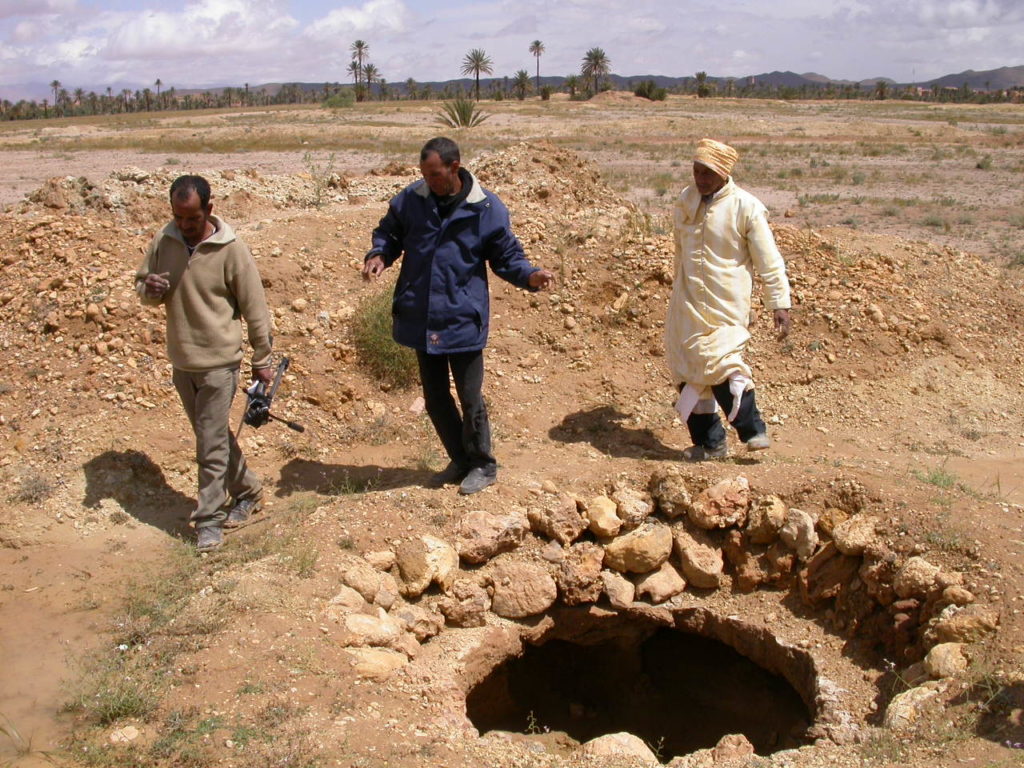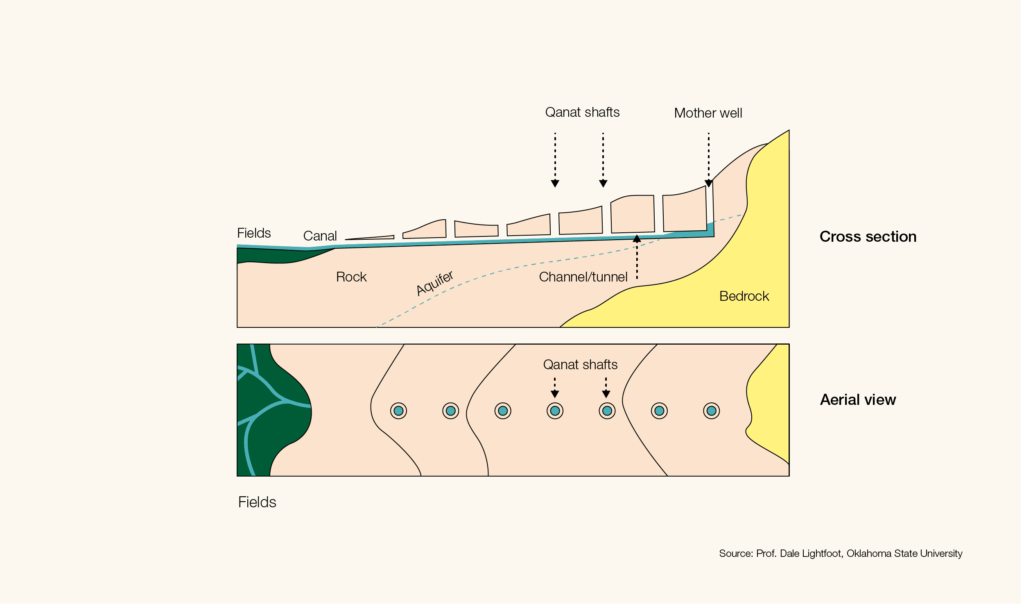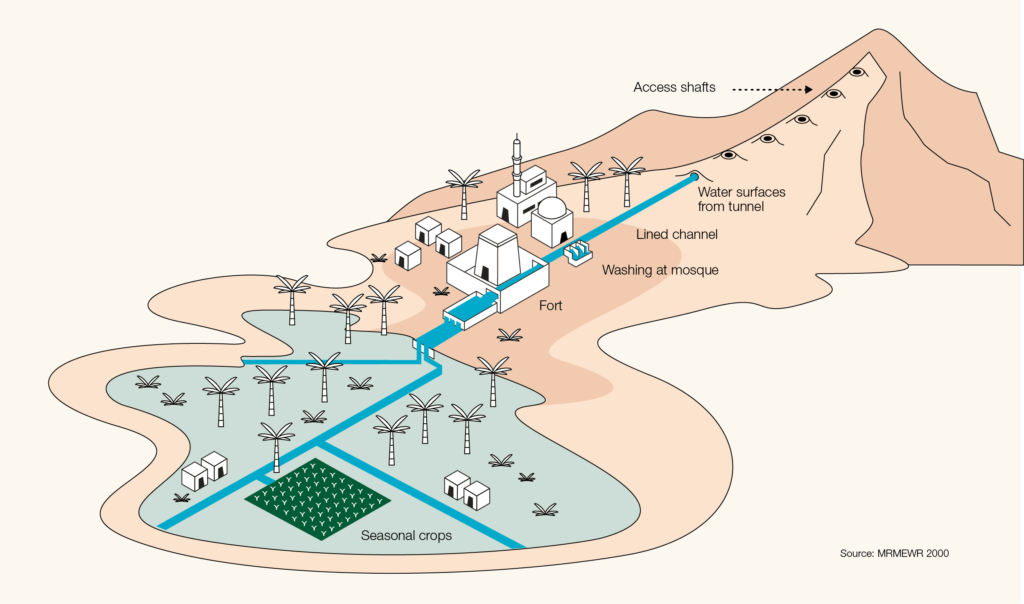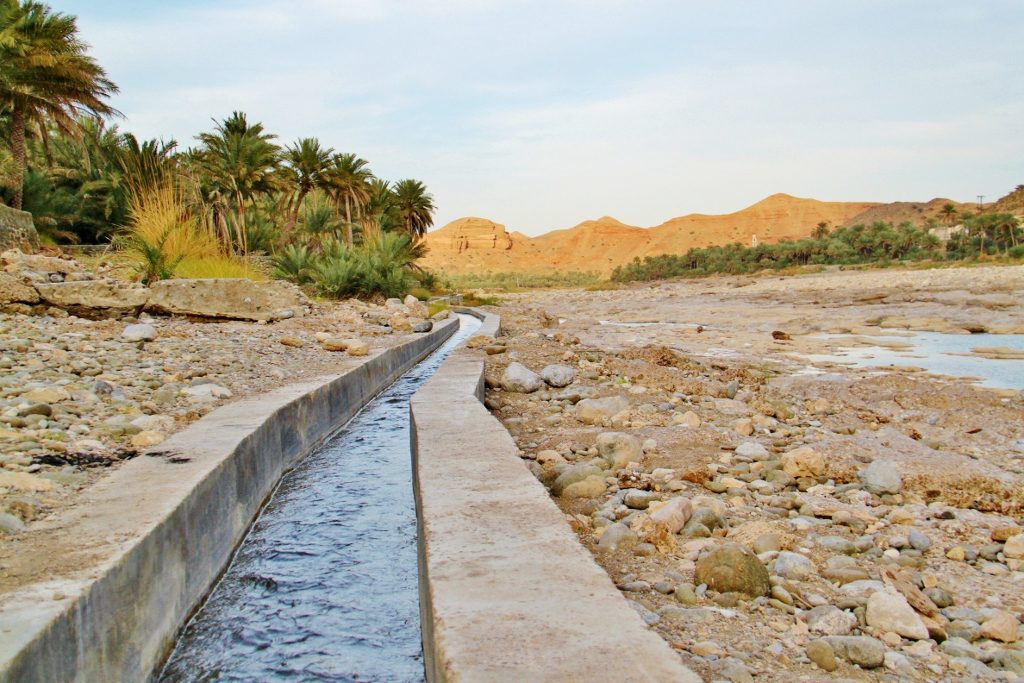The Qanat System: Ancient Technology for Sustainable Water Use
Originally developed in ancient Persia, the qanat system of water channels was introduced to Arabia and then across the Mediterranean region by the Arabs, first into North Africa and then to southern Spain via the Umayyad conquests and the associated scientific transmission of knowledge. The Spanish went on to take the concept of transporting groundwater to fields and cities all the way to South America.
A qanat is a constructed system of shafts and tunnels to intersect the water table beneath a hill, and to transport it by gravity to an exit point from where it is carried further along an open channel for human and agricultural uses in an otherwise arid environment.
Qanats are an ingenious system of water supply invented by ancient Persians around 3,000 years ago; known in Farsi as kariz, the qanat system spread to other parts of the world and some are still in use today. Qanats are recognised by UNESCO as an outstanding example of traditional technology used to support the essential water needs of various civilizations.

A qanat consists of a series of vertical shafts connected at their base by a gently sloping tunnel, all dug by hand with the help of bucket systems to lift the debris. The slope of the tunnel must be ‘just right’ to ensure continuous flow but without excessive flow that would be wasteful and would cause tunnel erosion.

The first shaft (or Mother Well) is dug on a hill to a depth a little below the water table. The tunnel slope is gentler than the hillside so that it eventually reaches the open air at the exit point. Groundwater flows from the Mother Well along the tunnel to emerge much like a natural spring. From here, the water is carried along channels to distribute it to villages and farms. Some communities have elaborate administrative systems to ensure the water is shared fairly. The line of vertical shafts serves a number of purposes: to excavate material during original construction, to accurately define the channel slope and for ongoing maintenance.

Why was this method so ingenious? In arid climates such as across the Middle East and North Africa, surface water is very scarce. Yet groundwater is often abundant, especially in hilly and mountainous regions, but difficult to access. Wells were dug to the water table, but the amount of water you could use was limited by how quickly you could lift it from the well, with human power or even animal power. The qanat system allows groundwater to flow freely and continuously without energy input. Like a natural spring, water may flow without interruption throughout the year due to the enormous storage capacity of the aquifer which may itself be replenished only once or twice a year or less. There is usually a gradual decline in flow as the water table drops until the next rare rainfall and replenishment event. The flow may even stop during prolonged drought. If this happens regularly, an option is to deepen the tunnel base or to dig a new Mother Well, further into the hillside to re-intersect the water table.
Another great advantage, which may not have been appreciated at the time, is that groundwater quality is mostly safer and better protected than surface water or wells from pollution from sediment and human and animal waste.

The technology often followed human migrations. The Persians introduced it to the mountains of Oman and the United Arab Emirates, where they are called falaj. They are still used for village water supply and irrigation of palm trees and alfalfa and have benefited from government financial support for renovation and maintenance. In addition to spreading across the Middle East, they were introduced eastwards to India and China, and westwards to Spain, with the Arab-Muslim expansion, and from there across to South America, where some are still in use in Chile and Peru. Known as puquios with the Incas or socavones, it remains uncertain whether the technology was introduced by the Spanish or invented earlier in South America.
The qanat system is responsible for literally creating desert oases. Whole villages, palm groves and local agriculture have thrived on the water they supply in desert settings with no other water supply. The qanats are also a wonder of the ancient world having helped to drive economic development and support growing populations in otherwise inhospitable arid environments.